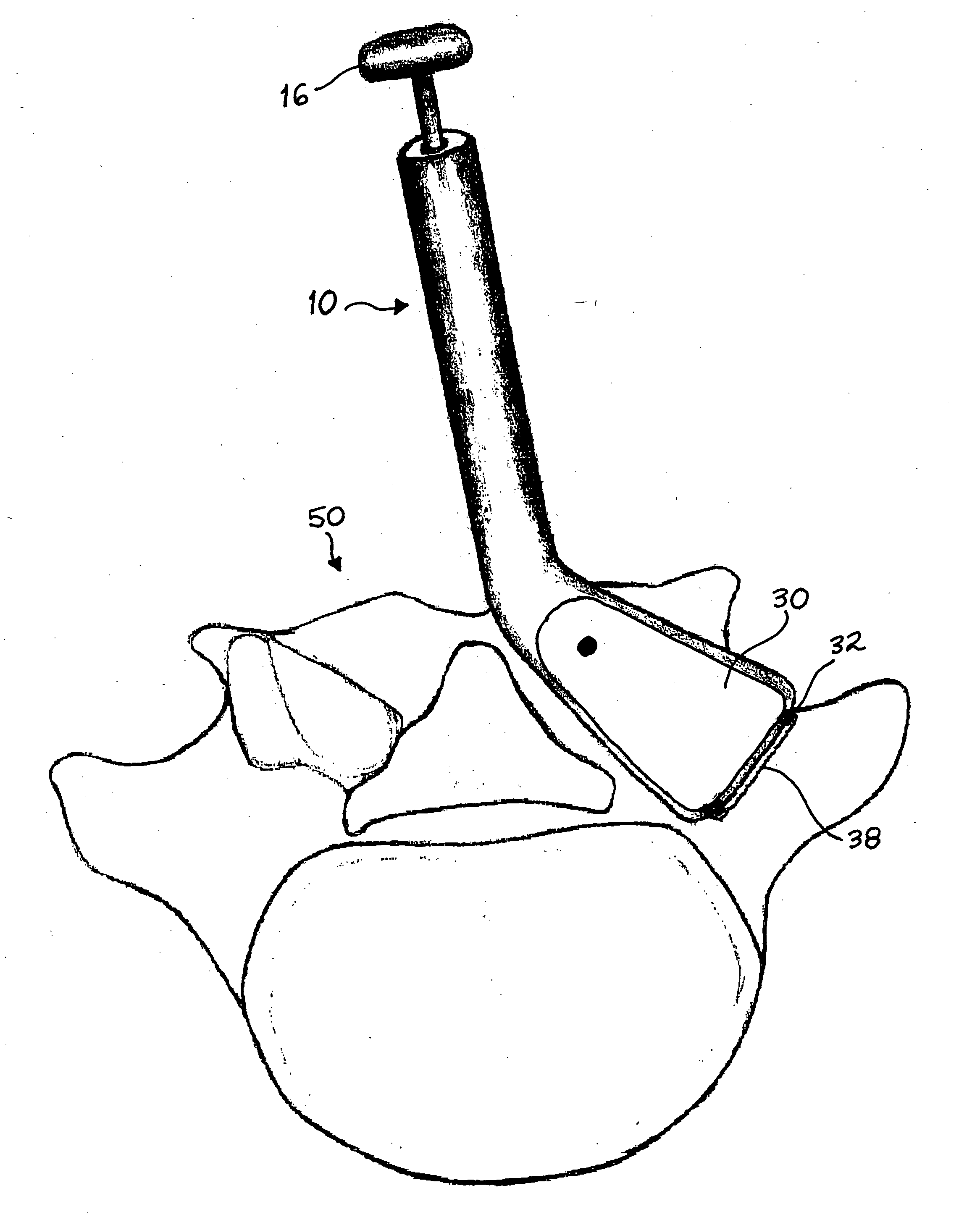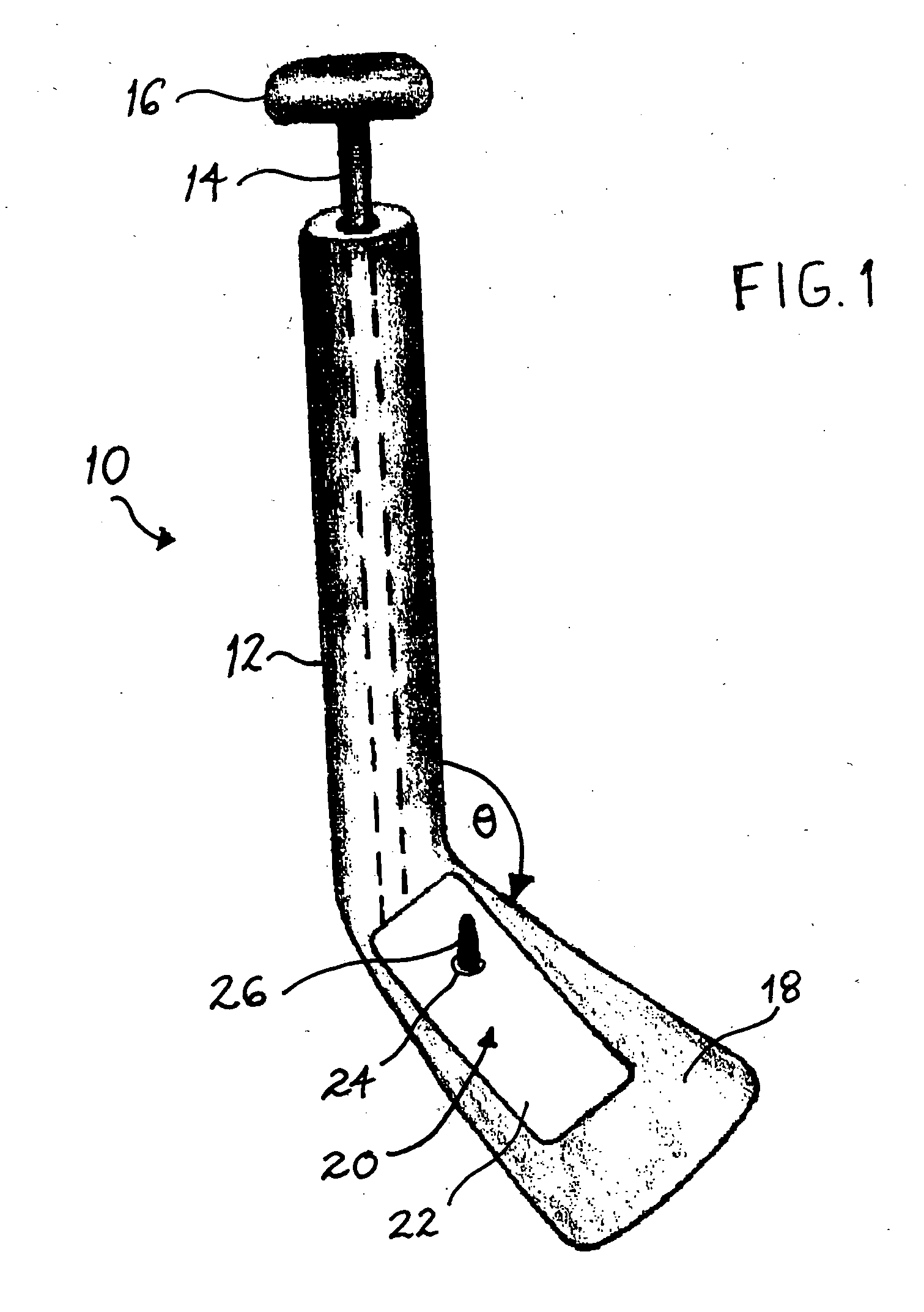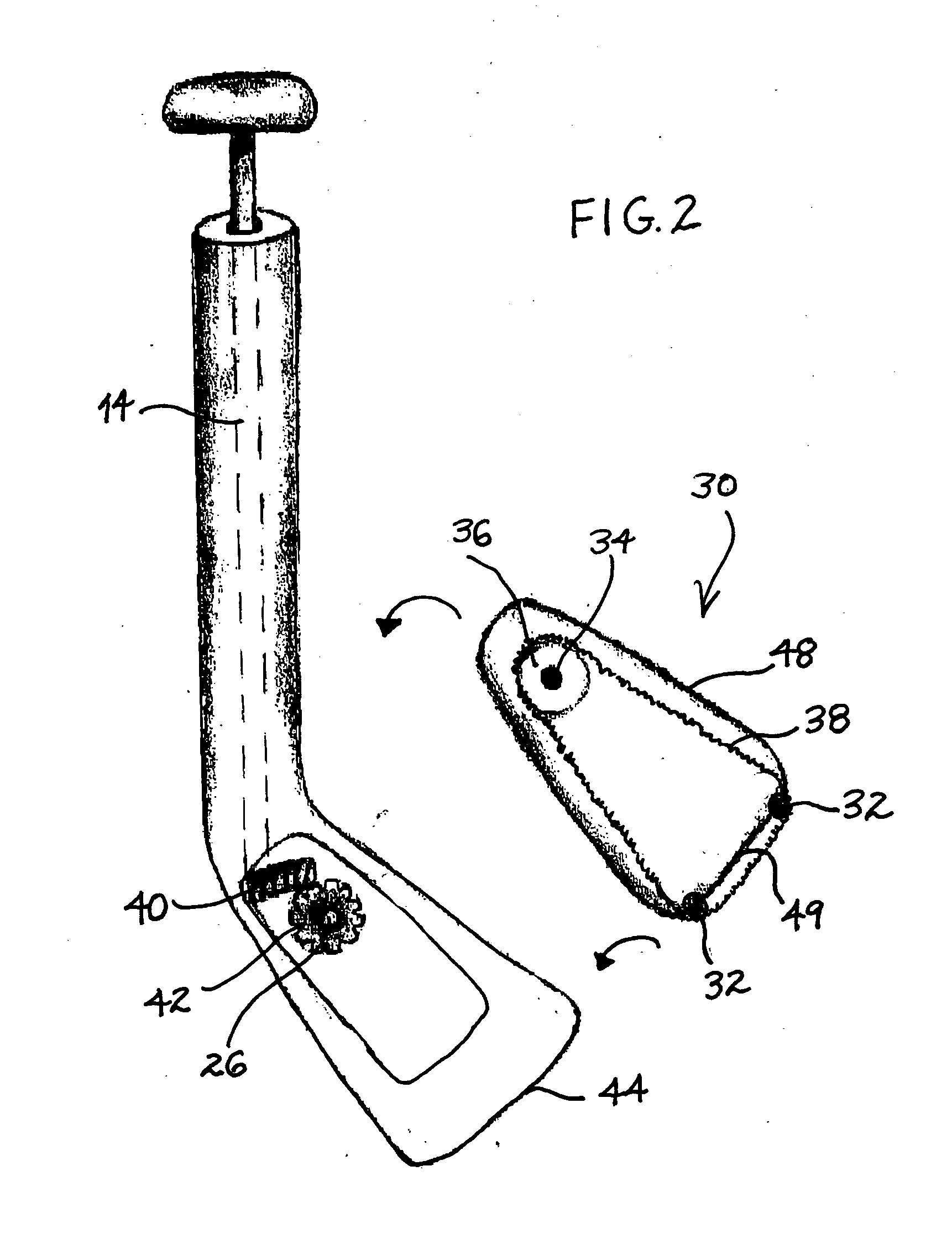Devices for performing fusion surgery using a split thickness technique to provide vascularized autograft
a technology of autograft and split thickness, which is applied in the field of devices for providing vascularized autografts using split thicknesses to perform fusion surgery. it can solve the problems of its own attendant risks and morbidity
- Summary
- Abstract
- Description
- Claims
- Application Information
AI Technical Summary
Benefits of technology
Problems solved by technology
Method used
Image
Examples
Embodiment Construction
[0037] Preferred embodiments of the present invention will be described in detail hereinafter with reference to the accompanying drawings, in which the same reference numerals represent similar or identical element throughout the views. In addition, a detailed description of known functions and configurations will be omitted when it may obscure the subject matter of the present invention.
[0038] Turning now to the drawings, FIG. 1 shows a tool 10 according to the present invention. Tool 10 consists of an elongated shaft 12 having a coaxially disposed rod 14 passing therethrough. A handle 16 is disposed at a proximal end of the tool 10, and is operably engaged with rod 14, such that actuation of handle 16 effects movement of rod 14. A footplate 18 extends from shaft 12 at an angle which is determined according to the intended use of the tool 10. That is, the angle of the tool 10 is designed to align itself with the angle of the portion of the vertebra which it is intended to cut. For...
PUM
 Login to View More
Login to View More Abstract
Description
Claims
Application Information
 Login to View More
Login to View More - R&D
- Intellectual Property
- Life Sciences
- Materials
- Tech Scout
- Unparalleled Data Quality
- Higher Quality Content
- 60% Fewer Hallucinations
Browse by: Latest US Patents, China's latest patents, Technical Efficacy Thesaurus, Application Domain, Technology Topic, Popular Technical Reports.
© 2025 PatSnap. All rights reserved.Legal|Privacy policy|Modern Slavery Act Transparency Statement|Sitemap|About US| Contact US: help@patsnap.com



